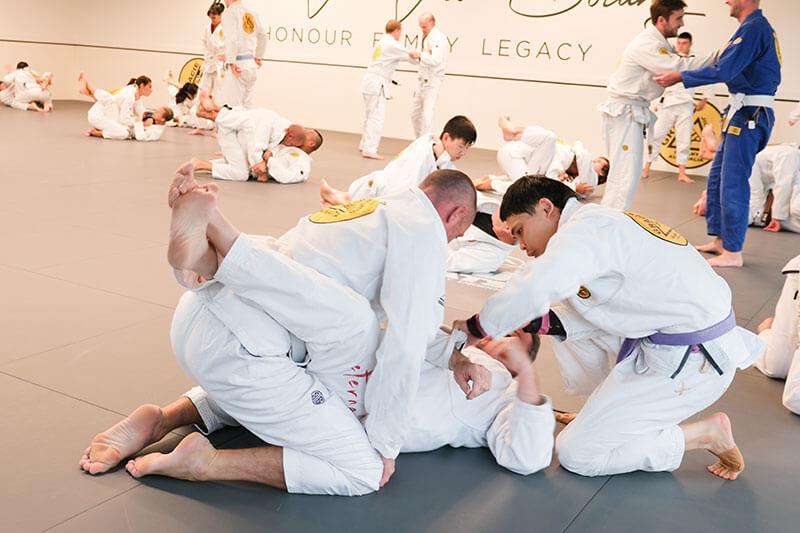In the past three decades Brazilian Jiu-Jitsu has become the foundation of mixed martial arts (MMA) and developed into a global sport in its one right. But with all of that, it’s easy to forget that BJJ at its core is all about self-defence. In this sense, BJJ is arguably most valuable to women.
Many martial arts offer self-defence skills to the men and women who study them. However, none can claim to be a female friendly martial art like Jiu-Jitsu is.
The idea that underpins Brazilian Jiu-Jitsu is that technique can overcome power. It’s designed for smaller and weaker people to defend themselves against larger foes. “Jiu-Jitsu is personal efficiency to protect the weaker, which anyone can do,” BJJ co-creator Helio Gracie once said. “It is the force of leverage against brute force.”
This naturally makes it ideal self-defence for women who seek to defend themselves against larger, stronger men.
If you’re a woman in South Sydney and are curious about martial arts, come into Gracie Botany for a free trial class. For more information on why this is a good idea, keep on reading.

Why BJJ is Female Friendly
Many martial arts do confer legitimate self-defence skills. There will always be debates about which martial arts are best, but it would be unfair to claim that tenured arts like Taekwondo or Judo offer no benefit. Still, that Jiu-Jitsu was designed from the ground up to be utilised against larger opponents means it’s tailor-made for women.
Jiu-Jitsu is a grappling martial art. That makes it different to popular Asian arts, like Karate, Kung Fu and Muay Thai. Those are all combat systems based around striking. At Gracie Botany, we teach students how to defend strikes, but not how to perform them on an opponent. Instead, it’s all grappling and wrestling. You’ll learn how to secure safe, dominant positions – like controlling an opponent’s back. Then you’ll learn how to immobilise aggressors using submission holds.
That makes it more similar to styles like Judo and wrestling. Brazilian Jiu-Jitsu differs from Judo in that it takes place mostly on the ground, unlike Judo which focuses on slamming your opponent from standing position.
Jiu-Jitsu shares similarities with wrestling too, but wrestling has a far faster, more explosive pace that benefits powerful athletic types. In wrestling, the game is over when you pin your opponent to the mat. In Jiu-Jitsu, that’s when the game really begins.
BJJ’s focus on ground-based grappling is key to its utility for smaller practitioners. If you think of any exercise that involves exerting force, the legs are almost always heavily involved. A large opponent, once grounded, is unable to use their legs to generate force – and thus less able to use their strength advantage.
Hard but easier
The final reason Jiu-Jitsu is a female-friendly martial art is the sparring practice. Since there is no injury risk from striking or slamming, experienced practitioners are able to spar with one another at almost full exertion.
This sounds intimidating, and can be at first. But once you feel comfortable enough to do so, sparring at full intensity is incredible valuable. It’s a great training ground for the fast-paced, unpredictable flow of an actual self-defence encounter. Some techniques only work in theory, while others work in practice. Sparring allows you to figure out which is which.
But while Jiu-Jitsu is an incredible tool, it’s unfortunately not magic. For any woman thinking about signing up to martial arts, some expectations should be set.
First, BJJ diminishes the importance of size and strength, but does not eliminate it. Technique is the most important factor in Jiu-Jitsu training, but not the only factor. If two opponents of equal skill grapple, the bigger or more athletic one is likely to win.
In other words, you will still find yourself being stifled against opponent’s size and strength on the mats. Larger training partners with superior technique will be challenging sparring partners. But know that superior technique can overcome large differences in height, weight and power. It’s simply a matter of having the patience and discipline to learn and master those techniques.
What’s important to remember is that you practise BJJ to defend yourself against untrained opponents who might confront you out on the streets. Against a larger-but-untrained opponent, you’ll find Jiu-Jitsu a highly effective self-defence system.
Brazilian Jiu-Jitsu is a marathon and not a sprint – this is true for practitioners of all shapes, sizes and genders. Dedicate yourself by learning the martial art on the mats and you’re guaranteed to be safer off the mats.
Come into Gracie Botany for a free trial lesson any time.



